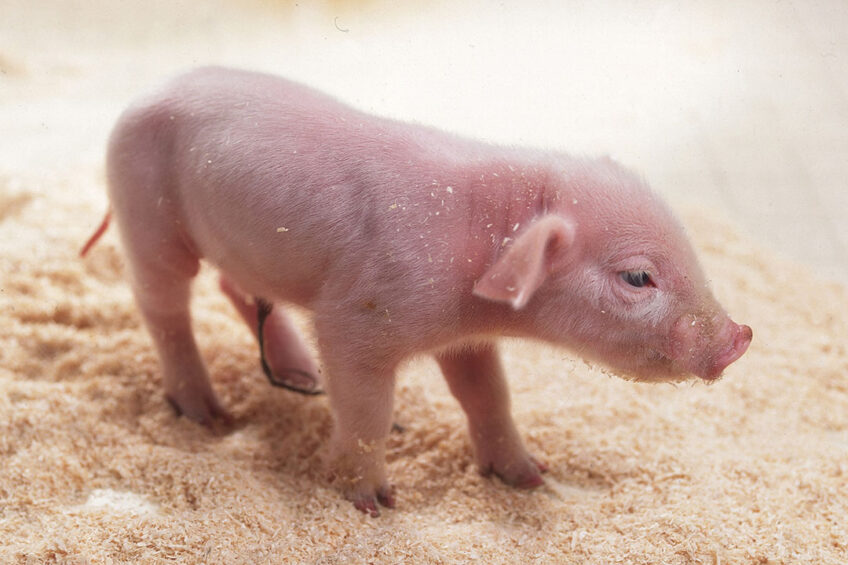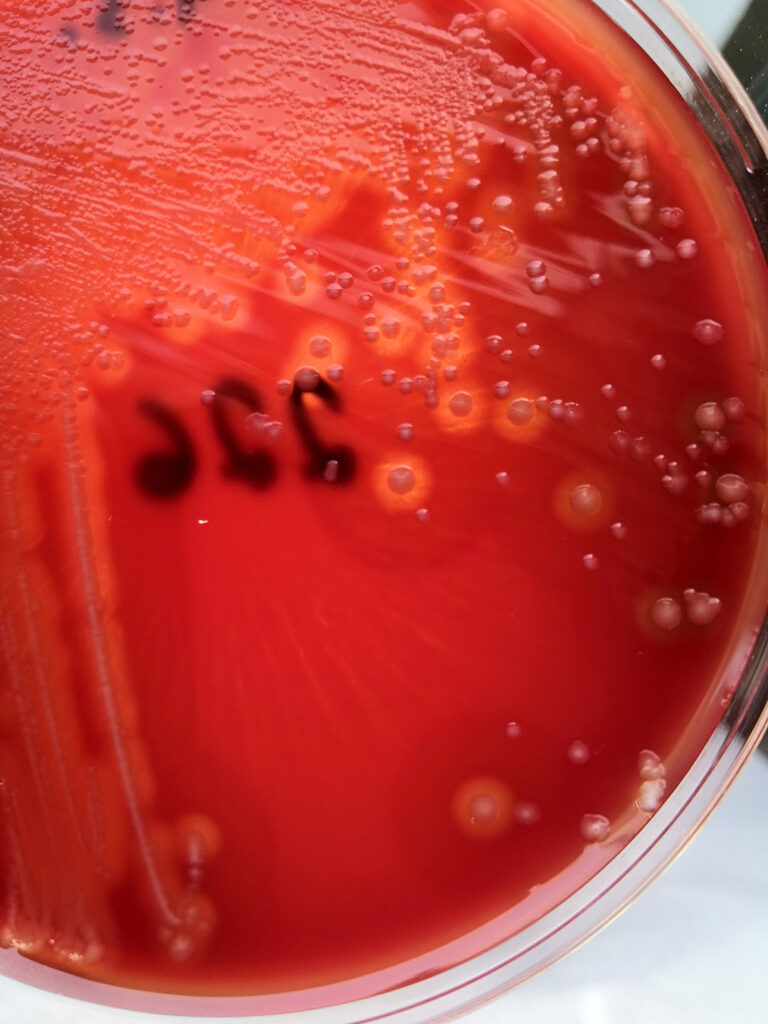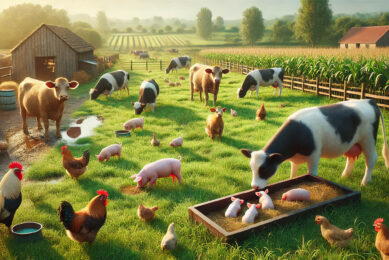Neonatal diarrhoea and coccidiosis – can we do better?

Neonatal diarrhoea and diarrhoea caused by Cystoisospora suis are very common and relevant problems in modern pig production. Commonly associated with increased pre-weaning mortality, poor growth rates and variation in weight at weaning. Having an effective vaccination programme is key to weaning high quality piglets.
Part of the Gut Health 2022 Special
Several pathogens can be involved in neonatal diarrhoea, the bacterial ones which are the most frequently isolated from clinical cases nowadays, are Escherichia coli complex and Clostridium perfringens type A.

Escherichia coli
Escherichia coli (E. coli) has historically been considered one of the main agents causing ND in pigs. The most common are the enterotoxigenic E. coli (ETEC) strains, characterised by the production of enterotoxins and different fimbriae (adhesins).
ETEC strains, responsible for ND usually possess these adhesins: F4, F5, F6 and F41. The fimbriae allow the microorganism to adhere to specific receptors on the brush borders of the small intestine’s enterocytes. The most prevalent ETEC strains express different variants of fimbriae F4.
The adherence of enterotoxigenic Escherichia coli (ETEC) to the intestinal mucosa is an essential step in the pathogenesis of ND. Therefore, effective vaccination against neonatal E. coli infection is based on vaccines, containing antigens representing the most common adhesins.
Clostridium perfringens complex
Anaerobic bacterial pathogens such as enterotoxigenic strains of Clostridium perfringens type A (CpA) (producing α toxin, β2 toxin), C. perfringens type C (β toxins) are important pathogens in the complex of ND.
CpA is part of the microbiota of the swine intestine and properly equipped strains can cause enteric disease. Infection of piglets is characterised by mild inflammation of the mucosa. Pathogenesis of CpA has the multifactorial character. For the disease, a high number of CpA in jejunum and ileum is characteristic (overgrowth of pathogenic strain). Consequently, large amount of CpA may be found in the faecal samples of affected piglets during the examination and quantification can serve as supportive diagnosis.
All strains of CpA are producing α toxin, with variability in case of quantity of the toxin produced in vitro and in vivo. β2 toxin has been discovered in 2 forms – the consensus and atypical variant, the consensus type being characteristic for the piglet diarrhoea cases and is considered as the more toxic form. Many authors suggest that β2 toxin plays a role in the causation of the enteric infection not only in pigs, but also in other animal species.
Many cases, isolated from clinical diarrhoea in piglets are positive for a combination of both toxins: α toxin, β2 toxin, according to typisitation by molecular methods.
Coccidiosis
Cystoisospora suis is an enteric parasite, causing one of the most prevalent and economically important parasitic infection during the suckling period: porcine cystoisosporosis. The clinical manifestation (diarrhoea not responding to antimicrobial treatment) is usually present from the 2nd week of age. Mucosa alterations in the small intestine persist for a considerable time after completion of the parasite’s growth.
A recently published study confirmed the negative effect of the parasite on the microbiome in piglets and the positive effect of using toltrazuril, which contributed to the stabilisation of the gut microbial development during the suckling phase and thus reduce the need for antibiotics to control infections with secondary bacterial enteropathogens, like CpA.
The negative effect of a C. suis infection can be as high as the loss of 1 kg or more of final weaning weight.
Effective control of ND and Coccidiosis
Preventive medicine programmes focused on the vaccination of gestating sows to induce passive transfer of antibodies and cellular immunity to the piglets via colostrum. Main conditions which need to be met is correct vaccination with an effective vaccine, covering relevant antigens and ingestion of sufficient colostrum by piglets.
Enteroporc coli AC (Ceva Sante Animale, France) is the new, registered vaccine containing fimbrial adhesins of Escherichia coli (F4ab, F4ac, F5, F6) and toxoids of Clostridium perfringens type A (α toxin, β2 toxin) and type C (β1 toxin). The vaccination induces protective antibodies in the colostrum, and those are considered as a correlate of protection. The vaccine antigen composition reflects the current need in the field, where the most dominant bacterial pathogen isolates from ND cases is CpA contains both important toxins (α toxin, β2 toxin).
The control of coccidiosis is based on metaphylactic application of toltrazuril during the first week of age of the piglets. Based on the several recently published studies, current control programmes based on oral toltrazuril appears to be insufficient on the majority of the examined farms, taking into consideration oocysts shedding.
The most probable explanation of this observation is treatment compliance issue and practical problems with oral drenching. Too low a dose of the drug has only an incomplete effect.
Innovation and improvement of coccidiosis control is combined in first injectable combo product Forceris (Ceva Sante Animale), where a single injection of fixed dose of 1,5 ml given during the first 3 days of life, provides an optimal supply of iron (in a form of gleptoferron) and an effective control of coccidiosis using toltrazuril.
Produce and wean high quality piglets
Despite the differences between the farms in general, large field studies have reported, that the high frequency of all litters born (6-7%) are affected with diarrhoea pre-weaning. The crucial factor for optimal performance is to produce and wean high quality piglets, which are not affected by diarrhoea to reach optimal weaning weight. The key veterinary intervention is to set up an effective vaccination scheme for breeding animals, reflecting on current situation in the field and the optimal control of coccidiosis, as the most prevalent and most important parasitic infection in piglets.






